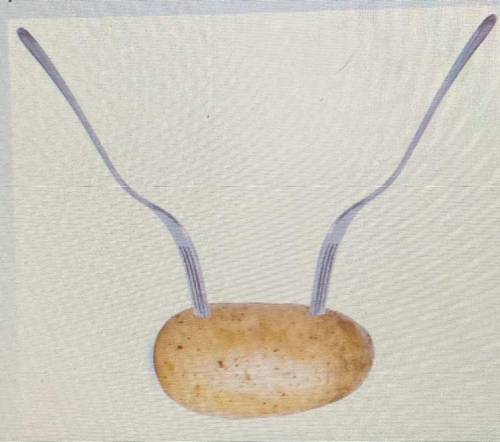Part A
Stick a fork into each end of the root vegetable as shown. The fork should be
on the...

Physics, 23.03.2021 20:40 iamabouttofail
Part A
Stick a fork into each end of the root vegetable as shown. The fork should be
on the same side of the vegetable, and slightly angled away from each other. Play some fort vegetable on the edge of a box or thin wall with the forks hanging down. Does the fourth vegetable balance in the position? Is there any position that works better than the other? Explain
Part B
Consider this question posed at the beginning of the task:
Does Earth’s gravitational force field act on objects that aren’t touching Earth’s surface?
Did the investigation answer the question? Explain whether it gave enough evidence to support the idea
that an invisible gravitational force field exists.
Part C
How might someone dispute the results of your investigation? How might you counter the argument
Part D
What would improve the investigation design or procedures?


Answers: 3


Other questions on the subject: Physics

Physics, 22.06.2019 12:10, zoebtharpe
Does anyone have the answers to online physics course plato course physics, semester a v3.0
Answers: 2


Physics, 22.06.2019 15:50, potatocow
The california mussel (mytilus californianus) attaches itself to a rock or other solid surface with a bundle of filaments known as the byssus. imagine that 15.0 j of work is done to stretch the distal end of the byssus. it releases 10.8 j of thermal energy as it relaxes. what is the resilience of the distal end of the byssus?
Answers: 2

Physics, 22.06.2019 19:30, cocoabean1981
The ability to make things happen is also called a. heat b. force c. matter d. energy
Answers: 2
You know the right answer?
Questions in other subjects:


English, 22.04.2020 04:31










